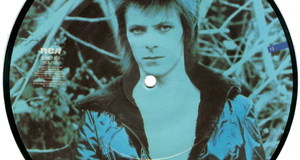From Elon Journal of Undergraduate Research in Communications VOL. 4 NO. 1The Influence of Rap and Hip-Hop Music: An Analysis on Audience Perceptions of Misogynistic LyricsV. ConclusionCultivation theory is supported by this paper’s findings, which found continued audience exposure to misogynistic lyrics in popular rap/hip-hop music influences college students’ attitudes toward the issue of domestic violence. This study’s content analysis approach to examining song lyrics of the most popular rap/hip-hop songs on Billboard’s “Hot 100” chart between 2000 and 2010 found messages communicating themes of power over, objectification of and violence against women to be prevalent across the sample selections (Bretthauer et al., 2006). This study’s findings are comparable to Bretthauer et al.’s (2006) study, which also uses a qualitative content analysis method to examine all top 20 popular music songs from 1998 through 2003 on the Billboard “Hot 100” chart. Both studies conclude the theme appearing with the greatest frequency throughout the song samples is violence against women; this study’s survey results indicate that respondents consider the legitimation of violence against women the most offensive theme in rap/hip-hop songs. Over half of survey respondents expressed that exposure to popular rap/hip-hop songs moderately or significantly shapes audience attitudes toward the issue of domestic violence. This supports the finding that “misogynistic music also serves as a means to desensitize individuals to sexual harassment, exploitation, abuse, and violence toward women” and “legitimizes the mistreatment and degradation of women” (Adams & Fuller, 2006, p. 953). Exposure to misogynistic messages in rap/hip-hop music has also been shown to “increase hostile and aggressive thoughts,” which may correlate to “more permanent hostility toward women” (Russo & Pirlott, 2006, p. 190). More than half of survey respondents believe rap/hip-hop music promotes aggressive and violent behaviors toward women; in addition, a majority of respondents feel this genre’s messages encourage disrespectful attitudes toward women. Listening to misogynistic content may also attribute to listeners’ “expression of similar attitudes in their own lives, including accepting the objectification of women” (Dixon, Zhang, & Conrad, 2009, p. 348). Half of survey respondents agree or strongly agree that rap/hip-hop music glorifies domestic violence, and when these messages are conveyed to listeners, it may contribute to the “creation of a social climate in which violence is viewed as acceptable” (Adams & Fuller, 2006, p. 953). Therefore, rap/hip-hop music’s portrayal of domestic violence matters because of the significant influence its misogynistic messages have on audiences. This study found male and female college students’ listening behaviors greatly affect their perceptions of misogynistic lyrics. Survey results indicate a positive correlation between misogynous thinking and rap/hip-hop consumption, which supports previous study findings in which “greater frequency of listening to rap music was associated with more positive attitudes toward and perceptions of rap music” (Tyson, 2006, p. 215).Survey respondents agreed that continued audience exposure to misogynistic rap/hip-hop music might reinforce negative attitudes about women because this content is “typically gender specific in its messages” (Martino, et. al, 2006, p. 432). Cobb & Boettcher (2007) determined that males will more likely experience “priming effects of misogynistic rap because they will be less motivated than will women to thoughtfully process the content of the lyrics” (p. 2037). In turn, “because women are often the targets of misogynistic rap lyrics,” they will be more inclined to reject these demeaning messages (Cobb & Boettcher, 2007, p. 3029). More than three-fourths of survey respondents agreed that most rap/hip-hop music suggests women are just for male sexual satisfaction, and in turn, nearly all students surveyed found rap/hip-hop songs to be more offensive to women than men. However, most men who took the survey held negative views about rap/hip-hop music compared to most women holding neutral views of the genre. LimitationsThis study used a non-probability, convenience sample of Elon University students, with 62 survey respondents, and as a result, these findings cannot be generalized to the general population of 5,357 undergraduate students (“About Elon University,” 2012). Survey results would have been more accurate if every student at Elon had an equal opportunity of participating in the survey. Also, this study’s survey received more responses from women than men, which is not an accurate representation of the population. Although race was not a variable measured in this survey, it can be assumed that the majority of student respondents were Caucasian, given Elon’s demographic makeup, with non-Caucasians only constituting 14% of undergraduate students (“About Elon University,” 2012). In addition, the survey component of this study failed to consider that not all respondents were familiar with the rap/hip-hop songs and corresponding music artists they were supposed to evaluate for misogynistic primes. Therefore, some students may not have been able to offer their correct evaluation, which may skew data if respondents could not directly state they were unfamiliar with an artist or song. A final limitation of this study is that while the researcher coded the songs as objectively as possible, individuals may interpret lyrics differently. Future ResearchFuture studies could determine if demographic differences, besides gender, may lead to different views on misogynistic lyrical content. Factors, such as respondent’s race, socioeconomic status and age, could alter the study’s findings. By comparing gender differences regarding attitudes and perceptions of rap/ hip-hop music with ethnic differences, this would determine which variable is more strongly influenced by misogynistic messages in songs (Tyson, 2006). Previous research studies found that the “stereotyping effects of sexually explicit lyrics in rap music might have a greater effect on White audiences,” which would create an interesting future comparison in relation to college students’ races and their views on rap/hip-hop music (Gan, Zillman, & Miltrook, 1997, p. 392). However, when individuals are exposed to media, “factors such as age, gender, race, or socioeconomic status would not matter,” according to Gerbner, because all people who consume similar amounts of misogynistic content would “share the same perceptions” (Rosenberry & Vicker, 2009, pg. 166). AcknowledgementThis author is thankful to Dr. Scott at Elon University for his guidance and advice, without which the article could not be published. The author also appreciates numerous reviewers who have helped revise this article. ReferencesAbout Elon University. (2012). Retrieved October 30, 2012, from http://www.elon.edu/e-web/about/default. xhtml Adams, T.M. & Fuller, D.B. (2006). The words have changed but the ideology remains the same: Misogynistic lyrics in rap music. Journal of Black Studies, 36, 938–957. Armstrong, E. G. (2001). Gansta misogyny: A content analysis of the portrayals of violence against women in rap music, 1987-1993. Journal of Criminal Justice and Popular Culture, 8(2), 96-126. Baran, S. J., & Davis, D.K. (2006). Mass communication theory: Foundation, ferment, and future (4th ed.). Belmont, CA: Thompson Wadsworth. Barongan, C. & Hall, G. (1996). The influence of misogynous rap music on sexual aggression against women. Psychology of Women Quarterly, 19, 195–207. Billboard Hot 100. Retrieved October 11, 2012, from Billboard website: http://www.billboard.com Bretthauer, B., Zimmerman, T. S., & Banning, J. H. (2006). A feminist analysis of popular music: Power over, objectification of, and violence against women. Journal of Feminist Family Therapy, 18(4), 29-49. Cobb, M. D., & Boettcher, W. A. (2007). Ambivalent sexism and misogynistic rap music: Does exposure to Eminem increase sexism? Journal of Applied Social Psychology, 37(12), 3025-3039. Dixon, T. L., Zhang, Y., & Conrad, K. (2009). Self-esteem, misogyny and afrocentricity: An examination of the relationship between rap music consumption and African American perceptions. Group Processes & Intergroup Relations, 12(3), 345-360. Gan, S. L., Zillman, D., & Miltrook, M. (1997). Stereotyping effect of Black women’s sexual rap on White audiences. Basic and Applied Social Psychology, 19, 381-399. Gerbner, G., Gross, L., Morgan, M., & Signorielli, N. (1994). Growing up with television: The cultivation perspective. In J. Bryant & D. Zillman (Eds.), Media effects: Advances in theory and research (pp. 17-41). Hillsdale, NJ: Erlbaum. Get the facts: The facts on domestic, dating and sexual violence. (2007). Retrieved September 13, 2012, from Futures Without Violence website: http://www.futureswithoutviolence.org/content/ action_center/detail/754 Gourdine, R. M., & Lemmons, B. P. (2011). Perceptions of misogyny in hip hop and rap: What do the youths think? Journal of Human Behavior in the Social Environment, 21, 57-72. Johnson, J. D., Jackson, L., & Gatto, L. (1995). Violent attitudes and deferred academic aspirations: Deleterious effects of exposure to rap music. Basic & Applied Social Psychology, 16, 27-41. Martino, S. C., Collins, R. L., Elliott, M. N., Strachman, A., Kanouse, D. E., & Berry, S. H. (2006). Exposure to degrading versus nondegrading music lyrics and sexual behavior among youth. Pediatrics, 118(2), 430-441. Nettleton, P. H. (2011). Domestic violence in men’s and women’s magazines: Women are guilty of choosing the wrong men, men are not guilty of hitting women. Women’s Studies in Communication, 34, 139-160. Pardun, C.J., L’Engle, K.l. & Brown, J.D. (2005). Linking exposure to outcomes: Early adolescents’ consumption of sexual content in six media. Mass Communication & Society, 8, 75–91. Prushank, D. (2007). Masculinities in teen magazines: The good, the bad, and the ugly. Journal of Men’s Studies, 15(2), 160–177. Rosenberry, J. & Vicker, L. (2009). Applied Mass Communication Theory. A Guide for Media Practitioners. Russo, N. F., & Pirlott, A. (2006). Gender-based violence: Concepts, methods, and findings. New York Academy of Sciences, 178-194. Smith, S. L. (2005). From Dr. Dre to dismissed: Assessing violence, sex, and substance use on MTV. Critical Studies in Media Communication, 22, 89–98. Stankiewicz, J. M., & Rosselli, F. (2008). Women as sex objects and victims in print advertisements. Sex Roles, 58, 579-589. Timmerman, L. M., Allen, M., Jorgensen, J., Herrett-Skjellum, J., Kramer, M. R., & Ryan, D. J. (2008). A review and meta-analysis examining the relationship of music content with sex, race, priming, and attitudes. Communication Quarterly, 56(3), 303-324. Tjaden, P. & Thoennes, P. (2000). Full report of the prevalence, incidence, and consequences of violence against women: Findings from the National Violence Against Women Survey. Washington DC: National Institute of Justice/Centers for Disease Control and Prevention. Available at: http://www.ojp. usdoj.gov/nij Tyson, E. H. (2006). Rap-music attitude and perception scale: A validation study. Research on Social Work Practice, 16(2), 211-223. Weitzer, R., & Kubrin, C. (2009). Misogyny in rap music : A content analysis of prevalence and meanings. Men and Masculinities, 12(1). What is domestic violence? (2012, August). Retrieved September 29, 2012, from http://www.ovw.usdoj.gov/domviolence.htm Wood, J. T. (2012). Gendered Lives (10th ed.). Cengage Learning. Zhang, Y. & Wildemuth, B. M. (2009). Qualitative analysis of content. In B. Wildemuth (Ed.), Applications of Social Research Methods to Questions in Information and Library Science (pp.308-319). Westport, CT: Libraries Unlimited. Suggested Reading from Inquiries Journal
Inquiries Journal provides undergraduate and graduate students around the world a platform for the wide dissemination of academic work over a range of core disciplines. Representing the work of students from hundreds of institutions around the globe, Inquiries Journal's large database of academic articles is completely free. Learn more | Blog | Submit Latest in Business & Communications |



















